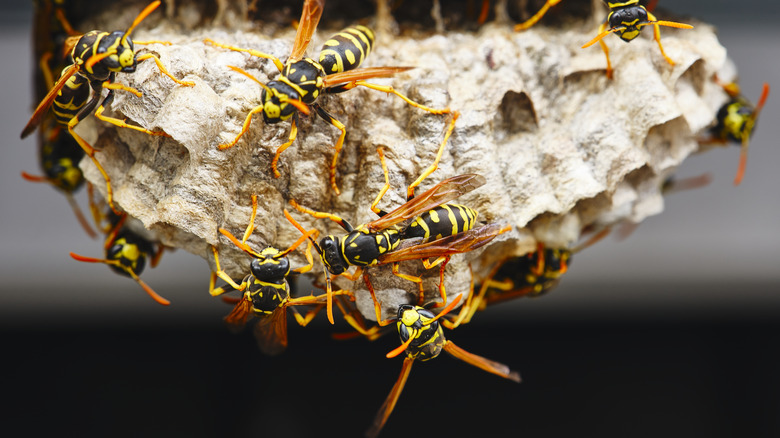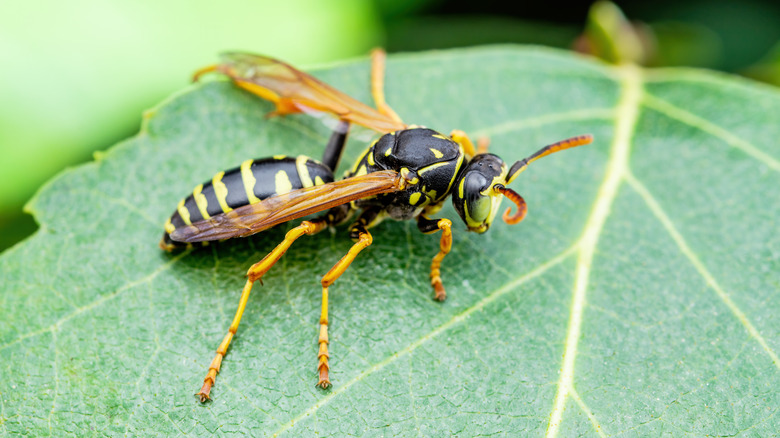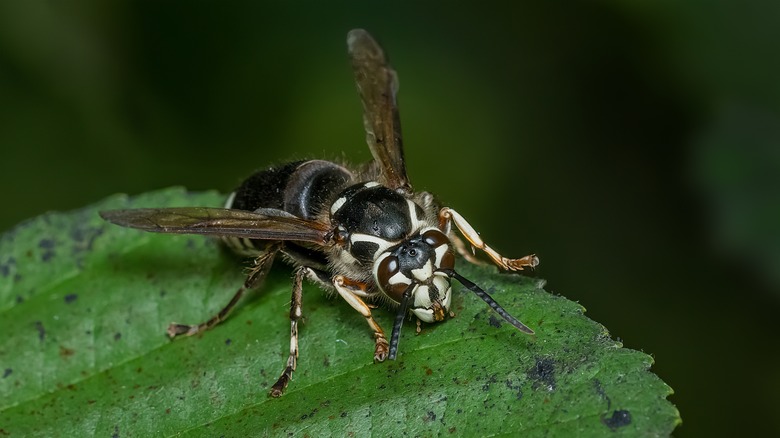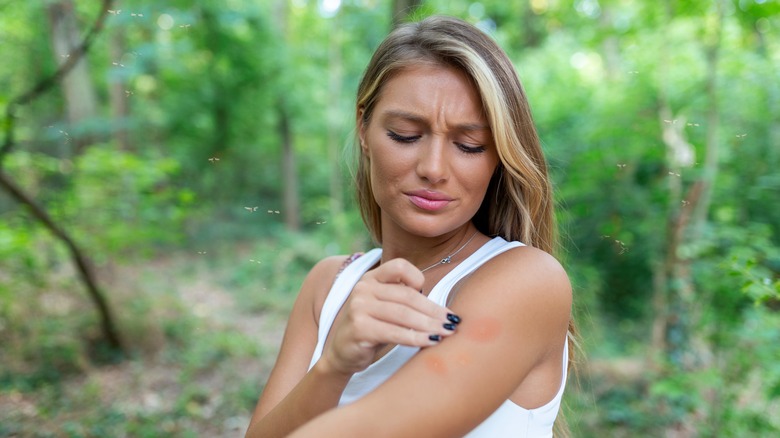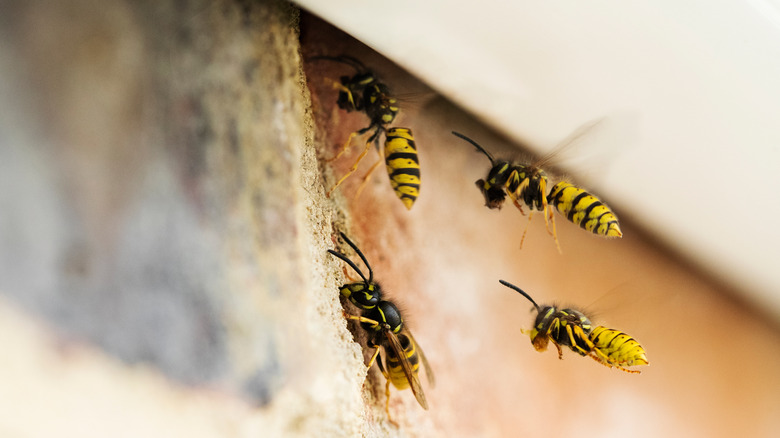What Is The Most Dangerous Type Of Wasp?
There's no single most dangerous wasp species because danger depends on a complex interplay between several factors. Here's a breakdown of those key factors.
Aggression levels describe a wasp's tendency to sting. Some wasps, like yellow jackets, are easily provoked and readily sting if they feel threatened. Others, like bald-faced hornets, are generally more defensive and will only sting if their nest is disturbed. Understanding a wasp's aggression level helps predict the likelihood of a sting encounter.
Venom potency refers to the strength and severity of a wasp's sting. Some wasps, like the Asian giant hornet, have incredibly potent venom that can cause kidney damage, intense pain, and can even be deadly in rare cases. Conversely, some wasps have less potent venom that might result in a localized reaction with minimal pain.
Encounter frequency refers to how often you're likely to come into contact with a particular wasp species. Species like yellow jackets, which are common around human settlements and attracted to food, have a higher encounter frequency compared to solitary wasps that rarely interact with humans. This frequency directly impacts the overall risk of getting stung.
Yellow jackets are the most aggressive
Yellow jackets are common wasps found worldwide, and their penchant for picnics and outdoor gatherings makes them a familiar (and often unwelcome) guest. Unlike honey bees, yellow jackets retain their barbed stingers after stinging, allowing them to deliver multiple painful jabs with a single encounter. Yellow jackets are responsible for most stings in the U.S. When it comes to stinging insects, these guys are the most aggressive. They are characterized by their yellow and black striped abdomens, which resemble the coloration of bees, but they have a more slender and elongated body shape.
The frequency of encounters with yellow jackets is another factor that bumps them up on the "danger" scale. These opportunistic wasps are drawn to sugary drinks, fruits, and meats, making them common visitors to outdoor dining areas. Their aggressive nature and willingness to sting repeatedly means that a single picnic gone wrong can result in multiple stings, significantly increasing the risk of a severe reaction, especially for those allergic to wasp venom.
The venom of bald-faced hornets
Bald-faced hornets can measure up to a whopping three-quarters of an inch in length. Despite their impressive size, they're not inherently aggressive. However, mess with their home, and you'll see a different side.
Bald-faced hornets are meticulous architects, constructing large, football-shaped nests out of chewed wood pulp mixed with saliva. These impressive structures can reach up to 14 inches in diameter and house hundreds of hornets. To protect their valuable real estate, bald-faced hornets rely on a multi-layered defense system. First, the nest itself is constructed with a single entrance at the bottom, acting as a choke point to funnel intruders. Second, a swarm of worker hornets constantly patrols the perimeter, acting as living security cameras. If a threat is detected, these guards will unleash a potent pheromone alarm, summoning the entire colony to launch a coordinated counter-attack. While individual stings from bald-faced hornets are less common than with yellow jackets, the sheer number of potential attackers in a hornet nest makes them a significant threat.
The sting of Asian giant hornets
The Asian giant hornet, also known as the "murder hornet," can reach over 1.5 inches long and is armed with a barbed stinger that injects a potent venom cocktail. Studies have shown that a single sting from an Asian giant hornet can deliver a dose of venom that can cause localized pain exceeding a score of two on the Schmidt Sting Pain Index. For reference, this index rates the pain of various insect stings, with one being a mild irritation and four being excruciating, burning pain. Imagine getting stung by something that feels like hot embers searing your skin — that's the kind of agony an Asian giant hornet sting can inflict.
While the Asian giant hornet is indeed notorious for its excruciating sting, it's not the only wasp packing a painful punch. Warrior wasps and tarantula wasps score the highest on the Schmidt scale — a four — but generally don't go near humans and are not aggressive.
The danger of allergic reactions
A crucial factor in wasp danger is allergic reactions. While most people experience pain and swelling around the sting site, some individuals have severe allergic reactions that can be life-threatening. These reactions, known as anaphylaxis, can progress rapidly and require immediate medical attention.
One of the most concerning symptoms is swelling of the throat and airways. This can constrict breathing passages, leading to shortness of breath, wheezing, and potentially complete airway blockage. In severe cases, this can lead to respiratory failure and death within minutes if not treated promptly. While seemingly less alarming, nausea and vomiting can be dangerous because they can lead to dehydration and aspiration. Aspiration occurs when vomit is inhaled into the lungs, which can cause pneumonia and respiratory distress.
These symptoms can be a sign of a severe allergic reaction causing a sudden drop in blood pressure. This can lead to lightheadedness, fainting, and even shock, a life-threatening condition where the body isn't getting enough blood flow to vital organs. In severe allergic reactions, skin symptoms can go beyond localized swelling. You might experience hives, a widespread rash that appears as raised, itchy welts, or even angioedema, a deeper swelling that affects the face, lips, and tongue. This swelling can further compromise airways, making breathing difficult.
Keeping safe around wasps
The best way to avoid wasp stings is to be aware of your surroundings, especially outdoors. Avoid leaving sugary drinks or food unattended, and be cautious around areas with wasp nests. If you encounter a wasp, stay calm and avoid swatting at it. Wasps are more likely to sting if they feel threatened. If a wasp lands on you, gently brush it away. In case of a sting, remove the stinger with care and apply a cold compress to reduce swelling. When removing the stinger, take care to slowly scrape it away versus pulling it out — the latter may result in a release of more venom.
While wasp stings are certainly unpleasant, it's important to remember that wasps can actually be beneficial insects. They act as natural pest control, preying on flies, mosquitoes, and other nuisance insects. However, attracting a whole swarm of wasps isn't ideal. To minimize wasp activity around your outdoor areas, avoid wearing bright colors and leaving garbage outside. Keep your trash cans tightly sealed, and be mindful of overripe fruit on trees or fallen on the ground. Contrary to popular belief, using WD-40 to repel wasps is ineffective and can be dangerous. Instead, try natural deterrents like citronella candles or strategically placed bowls of vinegar.
By understanding the different types of wasps and taking these precautions, you can minimize your risk of getting stung and enjoy the outdoors without worry. You might even find yourself appreciating these natural pest controllers buzzing around your yard!
